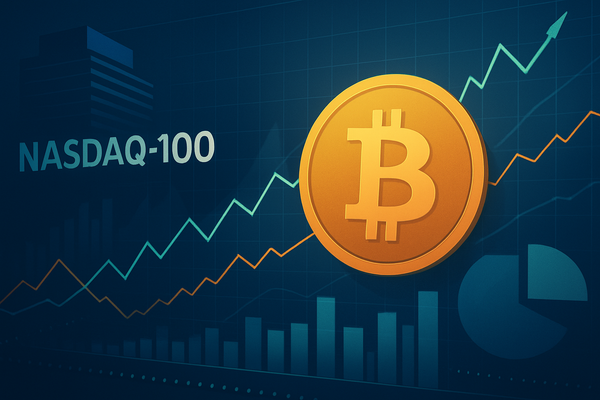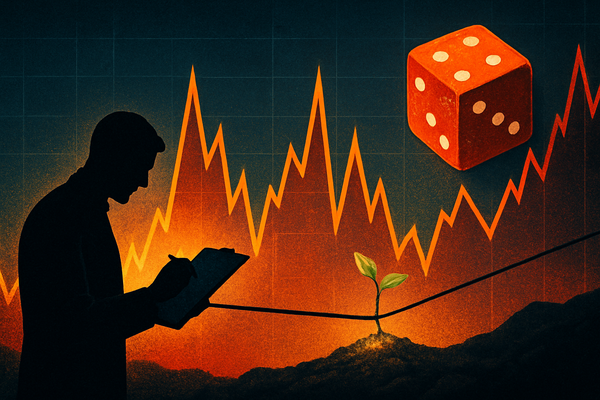Saudi Arabia's Golden Ambition: A 500% Surge in Mining Exploration Reshapes Global Gold and Silver Markets

Saudi Arabia is aggressively repositioning itself on the global economic stage, making a bold strategic move into the mining sector. The Kingdom has dramatically increased its mining exploration spending by an astounding 500% since 2020, reaching SAR 1.05 billion ($280.5 million) in 2024. This unprecedented surge, up from SAR 205 million ($55 million) in 2020, is a cornerstone of Saudi Vision 2030, aiming to diversify the economy away from its traditional reliance on oil and establish mining as the "third pillar" of national income. This ambitious pivot is set to have profound financial implications for the global gold and silver markets, as the Kingdom seeks to unlock its vast untapped mineral wealth, estimated at over $2.5 trillion.
The immediate implications are multifold: a potential increase in global gold and silver supply, a strategic revaluation of silver as a critical industrial metal for green technologies, and a significant shift in investment flows towards the burgeoning Saudi mining landscape. This aggressive investment signals Saudi Arabia's intent not just to be a producer, but a major player in the entire mineral value chain, from exploration and extraction to refining and industrial application, particularly for precious metals.
An Unprecedented Surge: Details, Timeline, and Key Players
Saudi Arabia's fivefold increase in mining exploration spending in just four years is a testament to its commitment to economic diversification. This growth is a direct result of heightened private-sector investment, which saw spending on exploration licenses surge by 164% from SAR 155 million ($41.3 million) in 2020 to SAR 770 million ($205.3 million) in 2024. Concurrently, government spending on geological programs through the Saudi Geological Survey (SGS) increased sixteen-fold from SAR 11 million ($2.9 million) to SAR 180 million ($48 million) over the same period. This investment has led to a dramatic increase in active exploration companies, from a mere six in 2020 to 226 in 2024, indicating a massive influx of investor confidence. The Kingdom's exploration density has also risen sharply, propelling its global ranking from 20th to 12th place. Over 70% of this spending is focused on grassroots projects in new, underexplored areas, signaling a serious hunt for new deposits.
The Kingdom's journey in mineral exploration has a long history, dating back to 1931 with initial surveys. However, the modern aggressive push began with the designation of mining as a key economic pillar under Vision 2030 in 2020. This was followed by the implementation of a new, investor-friendly mining law in 2021 and the launch of the Future Minerals Forum in 2022 to attract international stakeholders. Recent significant gold and copper discoveries in areas like Wadi al Jaww and Jabl Shayban, along with high-grade gold and silver assay results reported by companies like Resource Minerals International Ltd (ASX: RMI) from its Shaib Marqan and Wadi Salamah projects in 2025, underscore the tangible results of this intensified exploration.
Key players driving this transformation include the Ministry of Industry and Mineral Resources (MIM), which spearheads policy and regulatory reforms, and the Saudi Geological Survey (SGS), responsible for geological mapping and data. The Saudi Arabian Mining Company (Ma'aden) (Tadawul: 1211) is the national champion, a state-owned yet publicly listed entity that operates numerous projects across various minerals, including gold. Ma'aden, in a joint venture with the Public Investment Fund (PIF) through Manara Minerals Investment Company, also invests internationally. The PIF, Saudi Arabia's sovereign wealth fund, is a critical financier of Vision 2030 initiatives. A diverse array of private sector investors, both local and international, including India's Vedanta Resources, China's Zijin Mining Group, and UK-based Moxico Resources, are actively participating, reflecting strong initial market confidence in the Kingdom's mining potential.
Companies Poised to Win or Face Challenges
Saudi Arabia's aggressive mining expansion creates a lucrative environment for specific companies while potentially intensifying competition globally. The most direct beneficiary is undoubtedly Ma'aden (Tadawul: 1211), the Saudi national mining powerhouse. As the primary operator of existing gold mines like Mansourah and Massarah, and with ambitious plans to double its gold output to 1 million ounces annually by 2030, Ma'aden is at the forefront of this growth. Its joint ventures and strategic investments, such as a 10% stake in Brazil's Vale Base Metals and a 9.9% stake in Ivanhoe Electric (NYSE: IE, TSX: IE) for exploration in Saudi Arabia, solidify its winning position.
International mining giants with existing partnerships or a strategic focus on the region are also well-placed. Barrick Gold Corporation (NYSE: GOLD, TSX: ABX), already a partner in Saudi Arabia's copper sector through Ma'aden Barrick Copper Company (MBCC), could leverage this relationship to expand into gold and silver projects. Resource Minerals International (ASX: RMI), an early mover in the Saudi market, has already reported promising high-grade gold and silver assay results, positioning it for further growth and project development. Beyond direct mining, a broad spectrum of mining service, technology, and equipment providers stand to gain. Companies specializing in drilling, geological consulting, advanced mining software, and Engineering, Procurement, and Construction (EPC) services will see increased demand. Firms like Bechtel, known for large-scale infrastructure projects, could secure significant contracts for new mine development.
While the opportunities are vast, some entities might face indirect challenges. Smaller, less-capitalized exploration companies globally could experience intensified competition for licenses, skilled labor, and investment as Saudi Arabia draws significant capital and major players. In the very long term, if Saudi Arabia's expansion leads to a substantial increase in global gold and silver supply, it could exert downward pressure on commodity prices, potentially affecting the profitability of gold and silver producers worldwide, especially those with higher operating costs. However, this remains a speculative long-term outlook, with immediate impacts favoring growth within Saudi Arabia.
Wider Significance: A New Global Resource Powerhouse
Saudi Arabia's mining resurgence is more than just an economic diversification play; it represents a significant shift in global resource dynamics. This aggressive push aligns with broader industry trends toward securing critical mineral supply chains amidst geopolitical uncertainties and the accelerating global energy transition. By positioning itself as a "geopolitically neutral partner" and leveraging its vast, underexplored mineral wealth, Saudi Arabia aims to become a central hub in the international mineral trade, reducing its historical reliance on oil and enhancing its strategic importance. The focus on silver, in particular, highlights its dual role as a precious metal and a critical industrial input for green technologies like solar panels, aligning with the Kingdom's own ambitions in renewable energy.
The ripple effects of this expansion are expected to be substantial. Saudi Arabia's attractive new mining law, which reduced the tax rate from 45% to 20% and offers 100% foreign ownership, is already diverting foreign investment from traditional mining jurisdictions. The Kingdom's improved ranking in mining investment attractiveness (from 104th in 2013 to 23rd in 2024) underscores its growing appeal. This could lead to increased competition for exploration capital and expertise globally, as more companies look to establish a foothold in the Arabian Shield. Furthermore, by developing domestic refining capabilities for gold and potentially manufacturing facilities for silver-intensive technologies, Saudi Arabia aims to enhance supply chain resilience, reducing its own import dependence and offering a more secure alternative in the global market.
Historically, the control of precious metals has been synonymous with economic and geopolitical power, from ancient empires leveraging gold and silver to fund their expansion to modern nations using mineral wealth to drive industrialization. Saudi Arabia's current strategy echoes these historical precedents, systematically developing its mineral resources to secure a prominent global economic and political position in the 21st century. This systematic approach, backed by significant state capital and regulatory reform, differentiates it from historical "gold rushes" and positions it as a calculated, long-term strategic play.
What Comes Next: Opportunities, Challenges, and Scenarios
In the short term (1-5 years), Saudi Arabia's mining sector is expected to see accelerated discoveries and initial production from new projects. The surge in exploration activities is already yielding "significant" gold discoveries, such as the one south of Ma'aden's Mansourah-Massarah mine, which alone boasts estimated gold reserves of 7 million ounces. This will lead to increased licensing, with the Ministry of Industry and Mineral Resources actively announcing new opportunities for gold, silver, copper, and other metals. Crucially, ongoing infrastructure development in transportation and energy networks will improve access to remote mining sites, enhancing operational efficiency.
Long-term (beyond 5 years), the Kingdom envisions itself as a global mining and processing hub, moving beyond raw material extraction to integrated value chains. This includes establishing domestic refining capabilities for gold and developing industrial applications for silver, particularly in solar panel manufacturing. Strategic international partnerships and the adoption of advanced technologies like AI and data analytics will be critical to optimizing exploration, processing, and ensuring sustainable practices. To achieve these ambitious goals, continuous adaptation of regulatory frameworks to maintain investor confidence, significant investment in talent development to address skill shortages, and further expansion of financial incentives will be paramount.
The market opportunities are clear: economic diversification away from oil, capitalizing on increasing global demand for precious and critical minerals, attracting substantial foreign investment, and creating hundreds of thousands of new jobs. However, significant challenges remain, including developing specialized infrastructure in remote areas, addressing a potential talent shortage in a competitive labor market, and managing the high capital requirements and long development cycles inherent in mining. Geopolitical dynamics and global commodity price volatility will also continue to influence the sector's trajectory.
Potential outcomes range from an optimistic scenario where Saudi Arabia emerges as a global mining powerhouse, a leader in both extraction and downstream processing, to a moderate success scenario where it becomes a strong regional player. A less favorable scenario could see slower-than-expected growth due to persistent challenges, hindering the full realization of Vision 2030's ambitious targets.
Wrap-Up: A New Era for Saudi Minerals
Saudi Arabia's remarkable 500% increase in mining exploration spending since 2020 marks a definitive pivot in its economic strategy. This aggressive investment, particularly in gold and silver, is a powerful statement of the Kingdom's commitment to Vision 2030 and its ambition to establish mining as a formidable third pillar of its economy. The sheer scale of capital injection, coupled with comprehensive regulatory reforms and a proactive approach to attracting international partners, positions Saudi Arabia as a rapidly emerging force in the global minerals market.
Moving forward, the market will witness intensified exploration, leading to a clearer understanding of the Kingdom's vast mineral potential. The strategic importance of silver, driven by its dual role as a precious metal and a critical component in green technologies, will likely grow, influencing both industrial and investment demand. While challenges such as infrastructure development, talent acquisition, and global market volatility persist, the government's unwavering commitment and the substantial resources being deployed suggest a determined path towards overcoming these hurdles.
Investors should closely monitor several key indicators in the coming months: further regulatory reforms and incentives designed to attract foreign capital, progress on large-scale infrastructure projects, announcements of new gold and silver discoveries, and the inflow of private-sector foreign direct investment. Additionally, tracking global market dynamics for silver, particularly the interplay between industrial demand and investment sentiment, will be crucial for assessing the long-term price outlook. Saudi Arabia's journey to transform its mining sector is a long-term play, but one with the potential to significantly reshape global supply chains and redefine the Kingdom's economic identity.
This content is intended for informational purposes only and is not financial advice



